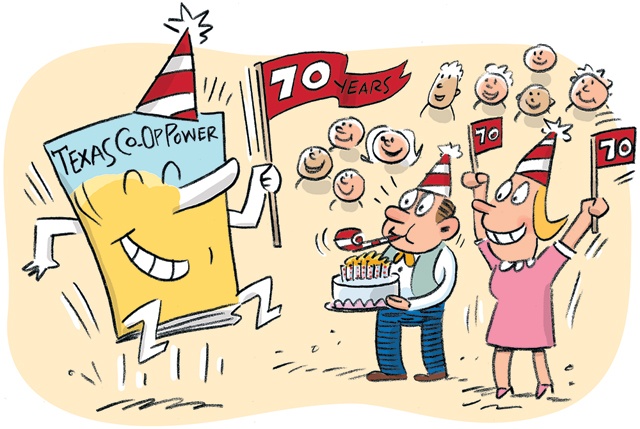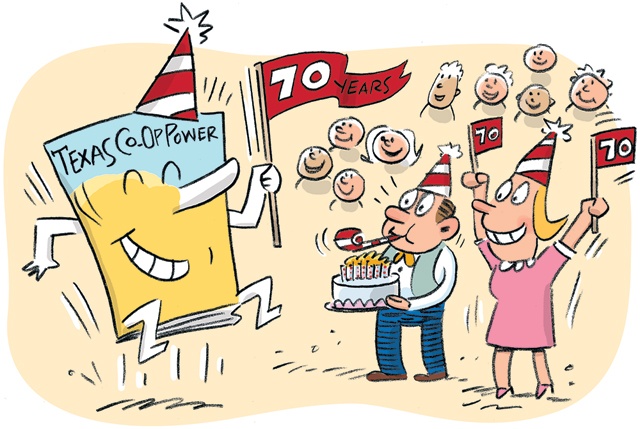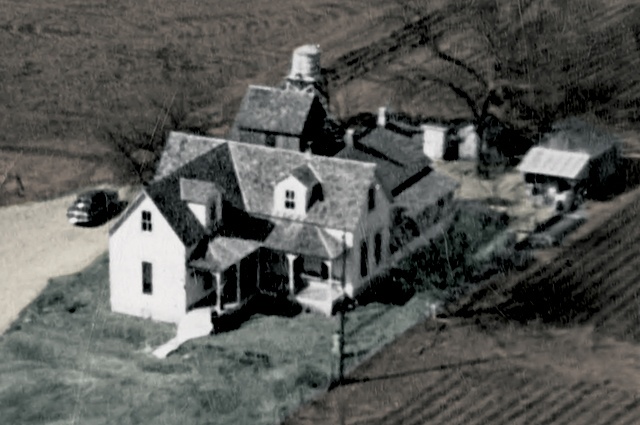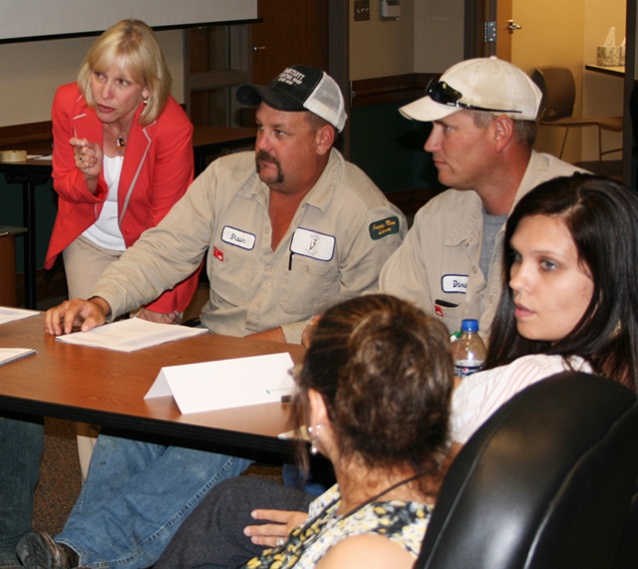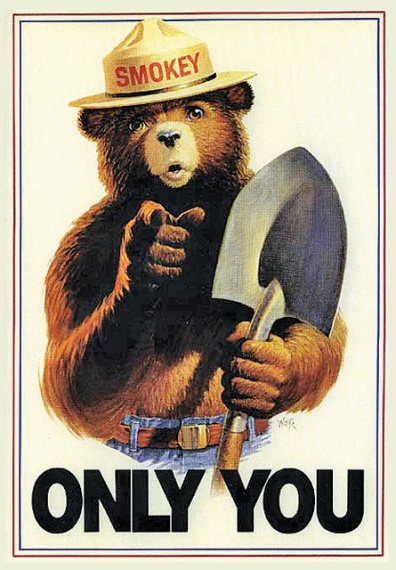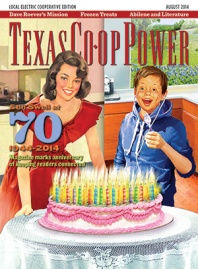We’re 70 years old now, but the pages of Texas Co-op Power are as spry as ever. Besides, we’re quite focused on 101, as in Co-operative Purpose 101.
Happy Birthday to Us
The 1.3 million subscribers of Texas Co-op Power today wouldn’t recognize the magazine that debuted July 1, 1944. It was a four-page broadsheet newspaper, light on photos and heavy on the message that electricity is vital to rural America and electric co-ops serve the members that own them.
That message remains, but the look and scope of the magazine, then called Texas Cooperative Electric Power, has changed immensely, as has the number of readers. Today, after copies of the magazine get shared, we reach 3 million readers. Just 14,000 copies of the August 1944 issue were printed.
Other notable developments in that first year:
• In August 1944, the magazine began to tout the benefits of electricity in the home with stories about safety, refrigerators and laundry machines under an umbrella headline that read: “Women’s Work Quickly Done With Electricity.” And under the headline “Cook Your 1,095 Meals Per Year on a Modern Electric Range” appeared the first recipe—for Fruit-Stuffed Spareribs.
• In September, an “All in Fun” section began featuring jokes. Here’s one:
Visitor: “Well, Joe, how do you like your new baby sister?”
Joe: “Oh, she’s all right I guess, but there are lots of things we need worse.”
• In October, tiny display advertising appeared for the first time. One ad was for The National Electrical Service Co. in Austin; the other for National Electric Appliance Co. in Cleveland, Ohio.
• In February 1945, the name was changed to Texas Co-op Power.
• In May 1945, ads for clothing patterns appeared.
• In August 1945, jokes continued to run, including this one:
“I would like some alligator shoes.”
“What size does your alligator wear?”
Purpose 101: Where the Co-op Way Starts
It all started 78 years ago in a wooden farmhouse near Bartlett. A determined community living in darkness pulled together and, with a little help from the Rural Electrification Administration, a string on a bulb was tugged, and darkness turned to light. That’s just some of what employees of Bartlett Electric Cooperative, the first to bring REA-funded electricity to rural America, heard at a daylong training event, Cooperative Purpose 101, May 28 at the co-op’s headquarters.
Rural Utilities Services Administrator John Padalino addressed the training group, assuring them that the role of cooperatives in their communities is just as important now as it was in the 1930s. His message came to light when Mary Saage, daughter-in-law of the family who lived in that first electrified farmhouse, made a brief visit to address the audience. She shared stories about how the electricity improved the quality of life for her and her family.
Texas Electric Cooperatives offers Cooperative Purpose 101 to co-ops across the state to invigorate employees with a renewed purpose: to power communities and empower members to improve the quality of their lives. Now more than ever, it is important for cooperative employees to emphasize to members: You are members, not customers, and it pays to be part of a cooperative. Your co-op doesn’t just keep the lights on, it helps your community thrive—with scholarships, Operation Round Up, changing out the lights at the ballpark. And that’s just the start of it.
Holding Cooperative Purpose 101 in the very community where the co-op purpose was first put into practice in Texas—when Charles Saage yanked on a string March 7, 1936—is significant. It shows the staying power of the co-op way and the rewards of empowering members to improve the quality of their lives. It emphasizes that co-ops and members thrive when the cooperative purpose—whether worded as it is today or as it might have been in 1936—is embraced and practiced by all employees.
Also in 1944
Smokey Bear was born August 9, 1944, when the U.S. Forest Service and the Ad Council agreed that a fictional bear would become the symbol for their joint effort to promote forest fire prevention. Smokey became the longest-running public service advertising campaign in U.S. history.
In spring 1950, a badly singed American black bear cub became the living symbol of Smokey Bear when a group of soldiers from Fort Bliss in El Paso rescued him from a forest fire in New Mexico.
The bear, dubbed Smokey Bear, died in 1976 at the National Zoo in Washington.
Speaking of Jokes
Sometime after electrification spread across the country and lightbulbs became ubiquitous, lightbulb jokes became part of popular culture. They almost always hold a particular group of people—those of a given ethnicity, profession or even university—up for ridicule.
We won’t go there. But we will share a couple we heard:
How many Einsteins does it take to change a lightbulb?
That depends on the speed of the changer and the mass of the bulb. Or vice versa, of course. Or it just might be easier to leave the bulb alone and change the room. It’s all relative.
How many mystery writers does it take to screw in a lightbulb?
Two—one to screw it almost all the way in, and the other to give it a surprising twist at the end.
The first lightbulb Richard L. Fluker’s parents ever used took on an important significance for years. See this month’s Observations, “Paying the ‘Light’ Bill.”
